Give Re-Birth to your Floor Tile and Grout on this Easter with our Revolutionary Products
Festivals are a time when friends and family gather to enjoy some delicious meals and merry-making. One such festival...
The slightest crack or stain on your costly floor tile can make your heart skip a beat. But, then how do you always monitor your flooring’s integrity? It may get stained, etched, cracked, develop mold, get discolored and face many more such issues. If your floor tile has been susceptible to any of these damages, then we will guide you how to fix them. But first, let us read more about the common types of floor damage.
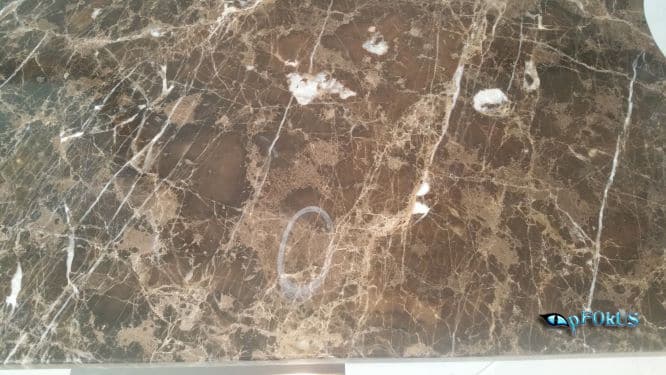
People tread on floors holding food and beverages and many times, they end up spilling. Etching is corroding of tile which generally happens when an acidic substance penetrates into the surface. Acidic beverages like coffee, tea, vinegar, etc can easily spill on your flooring leading to etching. You may find some whitish spots or stains on the surface caused by acidic cleaners or liquids.
Never use acidic cleaners or home remedies, like vinegar, lemon or such other products to clean floors. In case of acidic spills such as acidic fruit juices or spills from ods with low pH, then never spread the spills to wipe them. Instead, use a blotting paper to blot the liquid and then use a soft cloth to clean the surface.
If your surface has been etched, the best solution to fix it is to use a robust and alkaline-based cleaner that removes dense stains easily. If the etching is deep, then you can fix it by polishing. Polishing floor tile with a clear topical oil based product will help remove all the etching stains and restore your surface just like new.
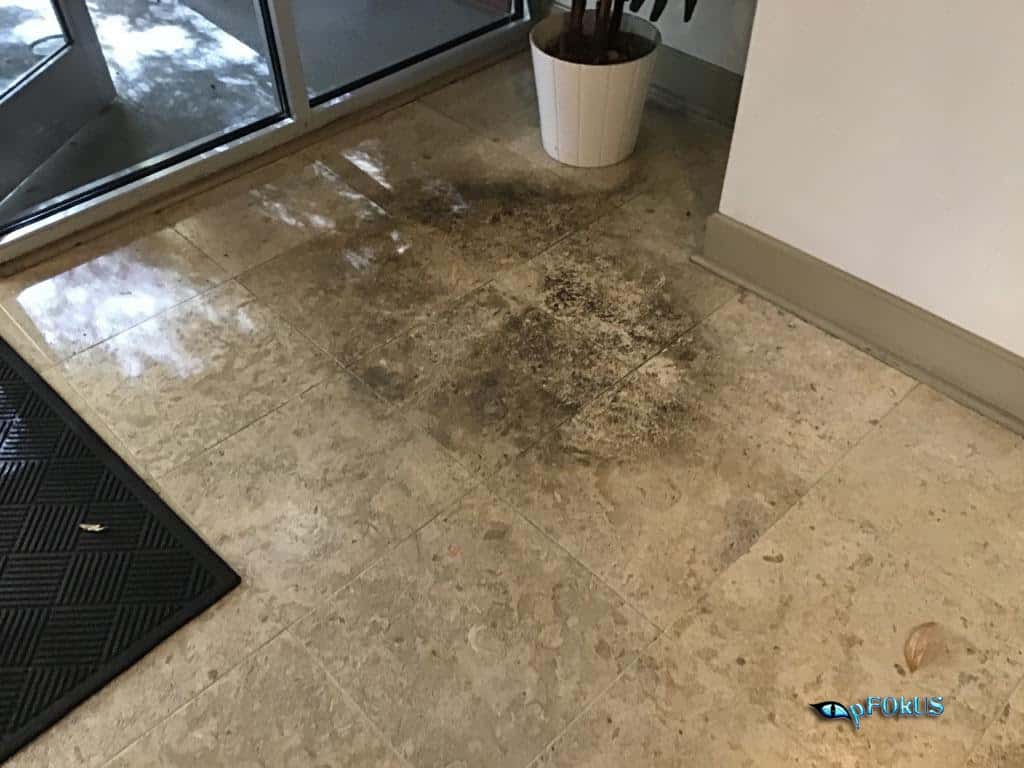
Stains are common on all kinds of floorings. Spills, dirts, grime and grease can make a surface stained. Stains can penetrate deeper inside the surface or form dense patches on the floor depending upon the nature of the tile. People install beautiful tile, such as natural stone, non natural stone, ceramic, porcelain and other tile to raise the aesthetic value of their surfaces. If the right care is not taken, these tiles will easily be accessible to stains, making the floor look unsightly.
Prevention is the best solution for floor stains. But, spillage is inevitable. To prevent the stains from causing severe damage, the only solution is to seal floor tile and grout with exquisite solvent based sealers, which not only coat the surface, but also waterproof the floor.
For stains that have already occur ed, you must use a robust and deep-penetrating cleaner to remove floor stains that also do not damage the integrity of the surface. Use a penetrative cleaner that is of high-quality and that easily soaks into various tile, like natural stone, non-natural stone, Ceramic and Porcelain, and grout to eliminate the damages from the root.
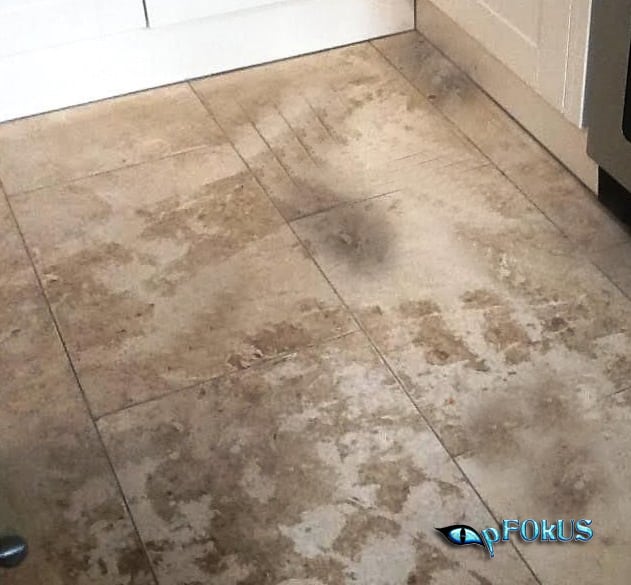
It is inevitable for your flooring to come in contact with some heavy objects and get scratched. Heavy furniture can sometimes also leave dents on the tile. Scratches also form when a tile flooring comes in contact with a sharp tool or an abrasive cleaner. These rough edges not only ruin the aesthetics of your flooring, they are also very harmful for those who walk barefoot on these sharp corners. These may form because of impact of heavy furniture or poor underlayment at the time of installation. Furthermore, these holes accumulate water and lead to mold and mildew breeding as well.
You can prevent scratches on your flooring by ensuring that you do not use pointed tools on its surface. For example, it is best to use a chopping board for cutting fruits and vegetables on natural stone countertops to prevent scratches. When placing or shifting heavy furniture on your tile, it is best to lift it and then place it on the required place. Do not slide heavy furniture on your natural stone floorings if you want to avoid impact damage.
To fix scratches and impact damage that has already been done, you can polish the surface with epoxy/resin sealers. These help to remove the scratch marks and restore your surface just like new.
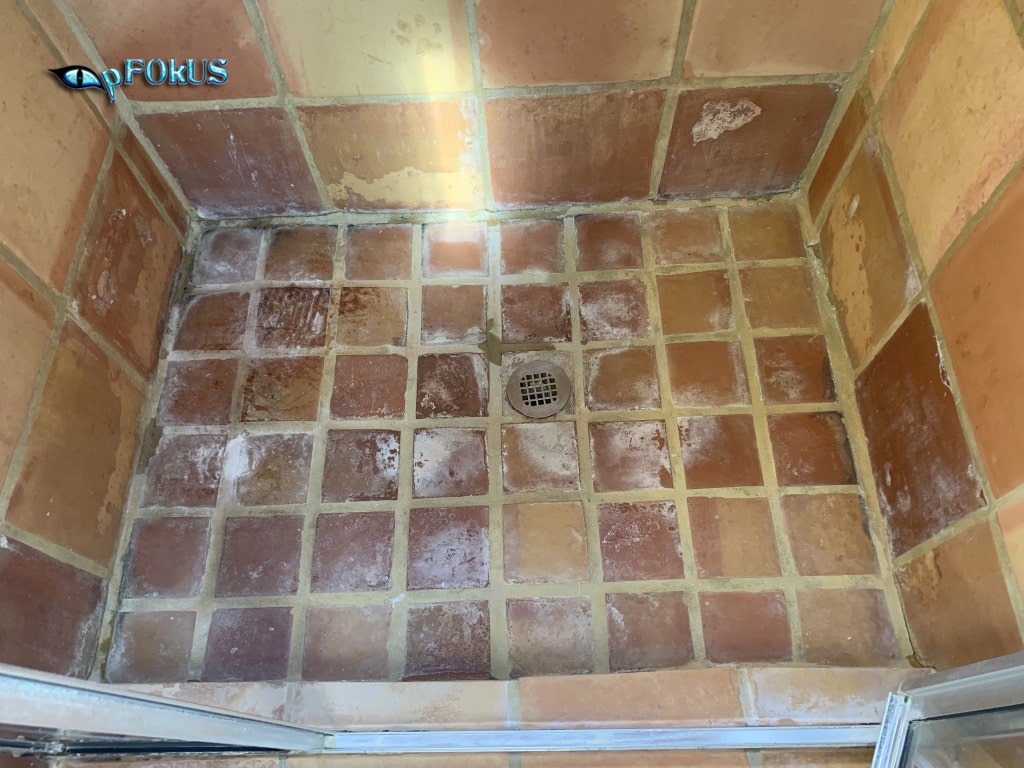
Mold and mildew breeds in any surface that is damp. While it is possible to clean mold breeding that is visible on the top of a floor tile, it is not possible to monitor mold breeding within the pores of porous surfaces. If not checked in due time, mold and mildew can lead to eye infections or respiratory problems. Mold and mildew may also breed in cracks and pits formed floor tile and grout, as these cuts accumulate water.
To avoid mold and mildew make sure that there is no dampness within the pores of a porous floor surface. Also, ensure that there is no water stagnation in the cracks or pits on the floor tile. To prevent mold and mildew formation, the ideal method is to clean the surface thoroughly and then seal it with a waterproof sealant that shuts the pores and forms a protective barrier on the stone, thereby preventing water absorption.
Mold and mildew can be removed by using penetrating cleaners. If you find pits and cracks on the surface, you should repair these first using pigmented flexible solvent-based epoxy/resin adhesives that render seamless and permanent repairs on your tile surface. Once repaired, proceed to sealing the tile to prevent any further possible damage.
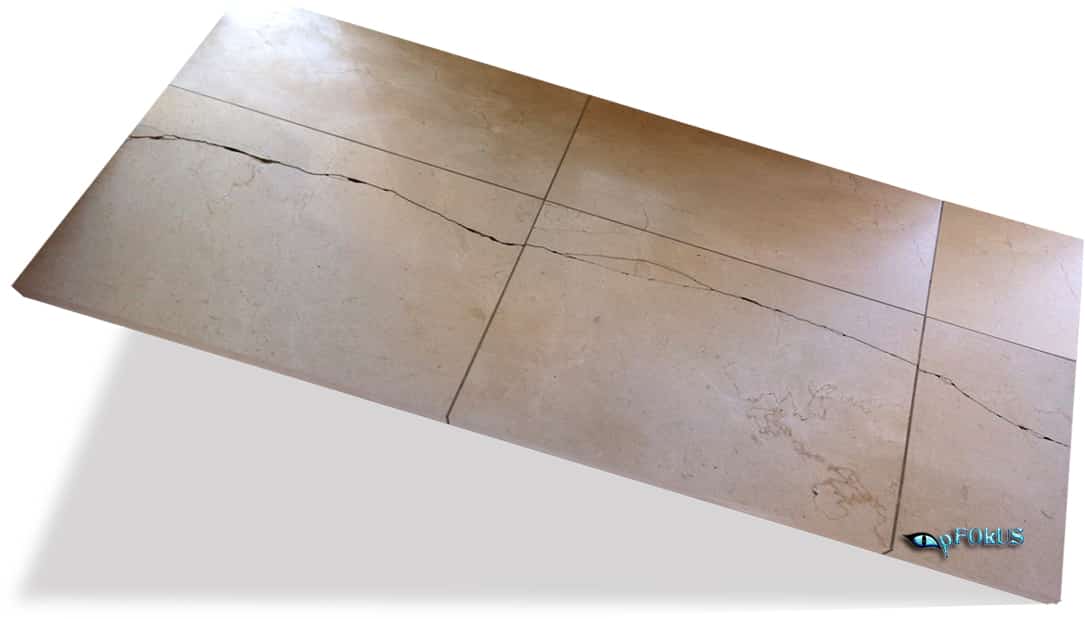
Grout and tile may develop cracks due to heavy impact, use of acidic cleaners or due to improper sealing. When you use acidic cleaners, it weakens the structure of soft grout and leads to grout cracks. Sometimes, tile may develop cracks, pits or holes due to heavy furniture or improper underlayment at the time of installation.
To prevent cracks in your grout, you should use colored grout sealers that seal the surface and also keep it’s integrity intact. But cracks are sometimes inevitable on the tile. Be careful while handling costly floor tile and do not ignore the slightest cracks formed.
Grout and tile cracks should be sealed with pigmented solvent based flexible epoxy/resin adhesives. New age adhesives available on the markets today can be pigmented in more than 40 color options, thus making it possible for you to repair the cracks and grout in a seamless way. After repairing, you should first seal the grout and then the tile to preserve their integrity for long.
This happens when you place hot vessels directly from the stove on the floor tile. This causes etching marks or heat damage on the surface.
You can prevent heat damage by always placing a coaster or a heat-resistant material first and then placing the hot vessel on it.
Polishing the floor tile can take away the impact or marks of heat damage. Experts use high-quality clear resin topical sealers that add a lovely sheen and lustre to the surface, making the heat damage marks less visible.
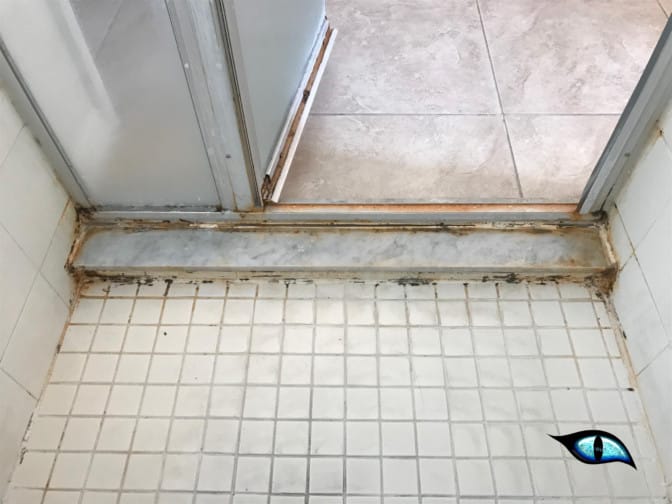
This is a common floor damage that gives a hazy appearance of your tile under the sealant coat. The most probable reason for this is that the tile was sealed before sealing the grout and the moisture present in the grout led to mold breeding, which gives a hazy appearance underneath the sealant.
A very common floor damage type is hazing. This happens when contractors seal the tile without sealing the grout or when they seal a wet tile surface. The moisture present in the grout quickly gives birth to mold, which spreads on the tile surface underneath the sealant and appears hazy. Similarly, if the contractor has applied a sealant on a wet tile surface, mold will develop underneath the sealant coat and give a hazy appearance.
Hazing can be prevented by first sealing the grout and then sealing the tile. This removes any possibility of moisture being present in the grout.
If your floor is looking hazed, you need to first remove the top sealant and then clean the surface properly with high-quality robust cleaners. Next, you need to seal the grout and wait for the surface to get completely dry. Lastly, you can seal the tile.
These above are the 7 common types of floor damage. We have also provided you with solutions on how to fix them. If you take care of these damages, you can preserve the integrity and beauty of your surfaces for long.
If you want to restore your floor tile yourself, you can buy restoration products from pFOkUS – a leading floor, tile and grout cleaners and sealers manufacturing company in the US. But,if you feel these procedures are too overwhelming to do them yourself, you can hire experts from D’Sapone – a paramount restoration service provider in the US. They use only pFOkUS products for their patented services.